Argand Lighthouse Lamp
| < The Argand Lamp – New Technology | Δ Index | The Stevensons > |
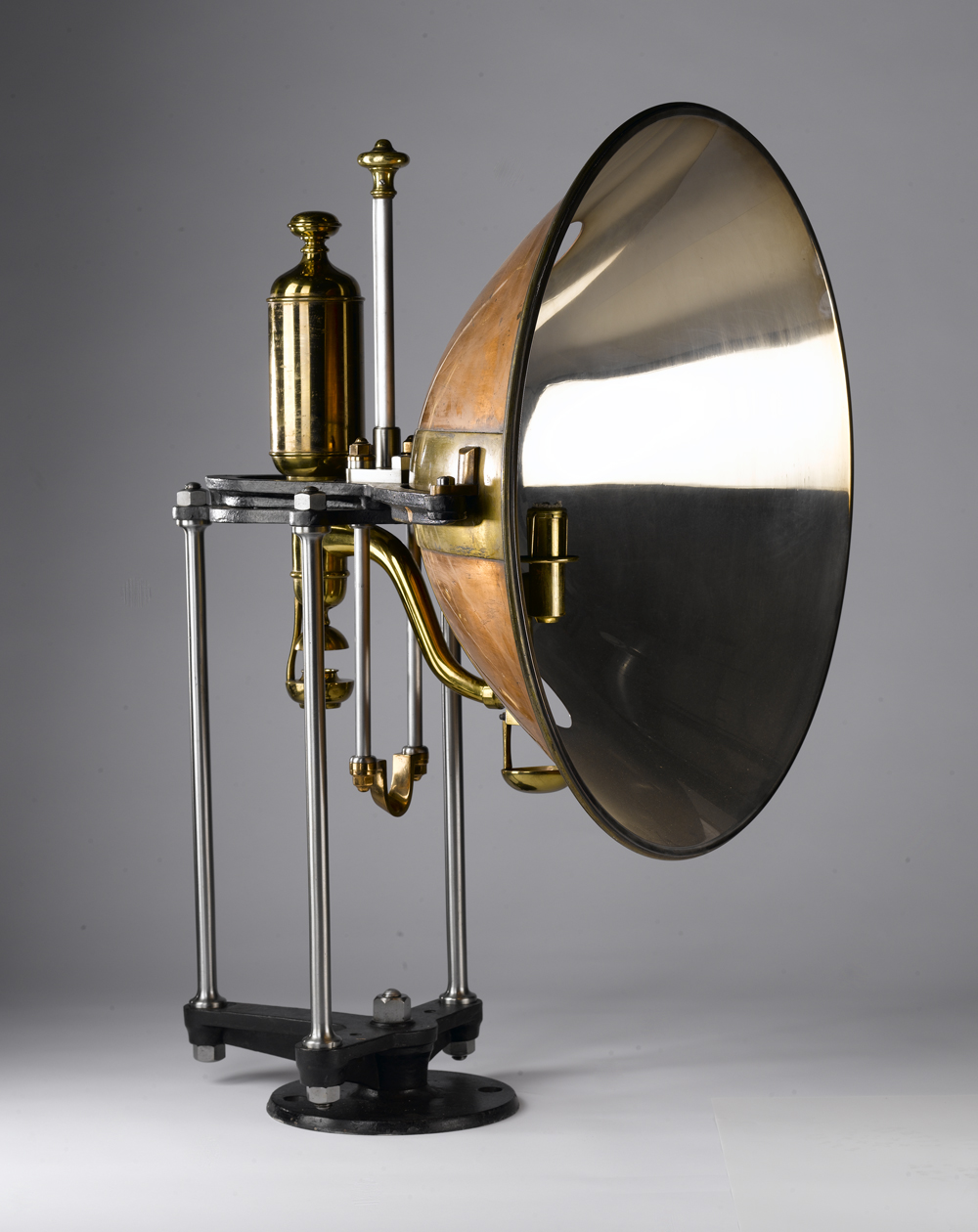
If you look at the lamp in ten light tower, you will see that it is an Argand lamp fitted with a reflector. In this photo, the oil reservoir is on left of the reflector, and the burner inside the bowl of the reflector.
The Oil Fountain
To understand how this lamp works, here is a cross-section diagram (with the reflector removed for the moment)
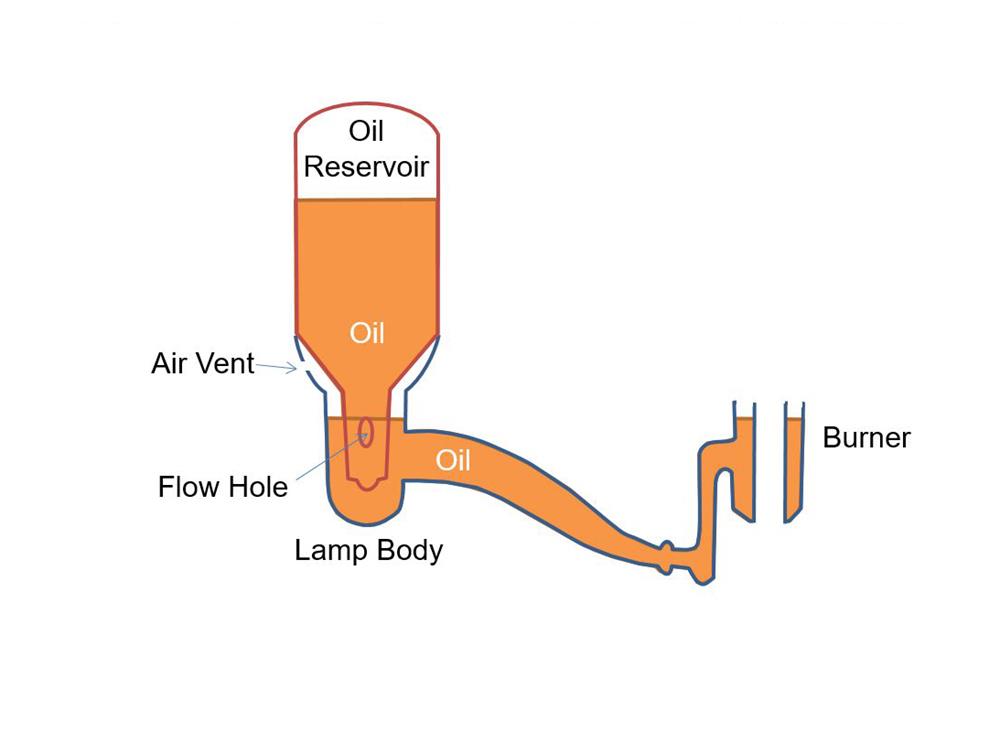
Starting on the left, the oil reservoir is like an inverted bottle with its neck held firmly inside an open dish.
Liquid will flow from the bottle until the level in the lamp body reaches the top of the flow hole in the reservoir – and then it stops.
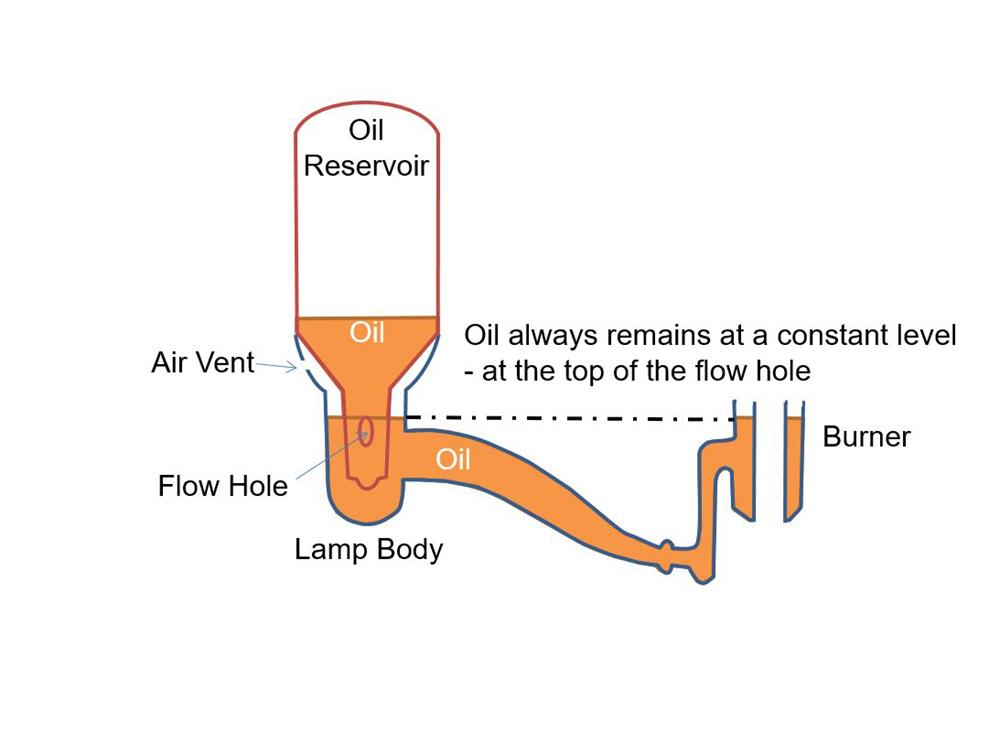
If liquid is removed from the lamp body, it will be replaced from the reservoir, but will always stay at the same level in the lamp body, determined by the position of the flow hole in the neck of the reservoir. This type of reservoir is called a fountain – as used in fountain pens – not in water features!
The oil level in the burner is of course the same as the oil level in the lamp body, so the level stays constant as the oil is consumed by the burner.
Argand’s experiments determined that the optimum level was 1/4 inch below the top of the burner for whale oil and 3/8 inch for colza (rape seed) oil.
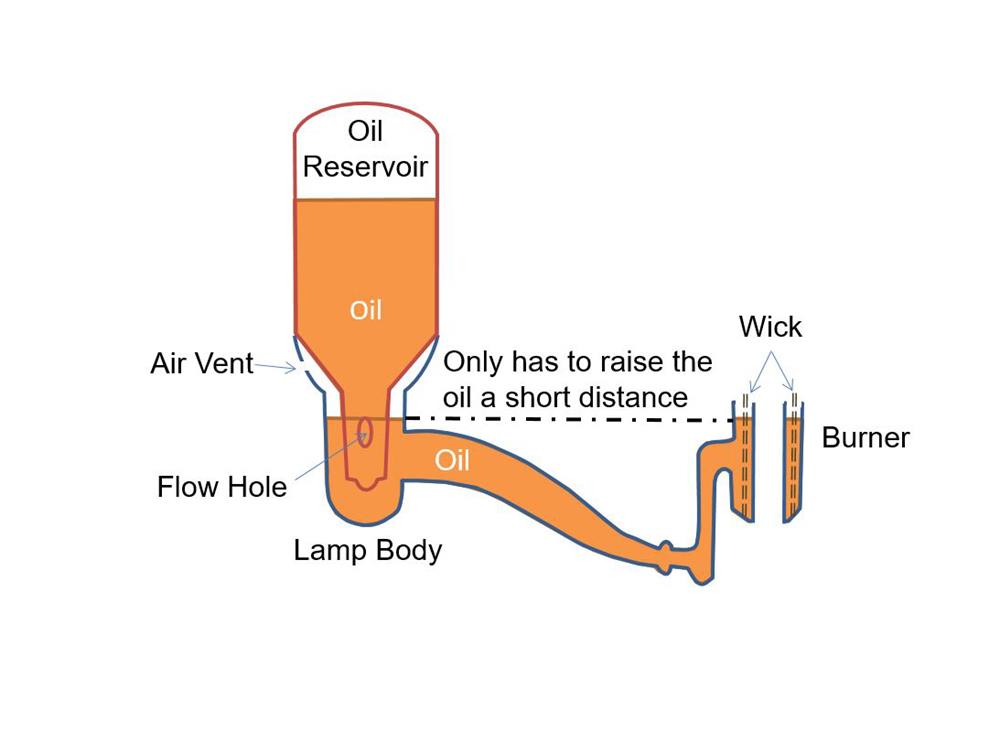
The Burner
The second part of Argand’s invention was the shape of the burner.
He rolled a flat wick into a cylinder, and fitted this into a double-walled cylindrical burner.
This allowed air to reach inside and outside the wick, improving combustion, and increasing the output of light.
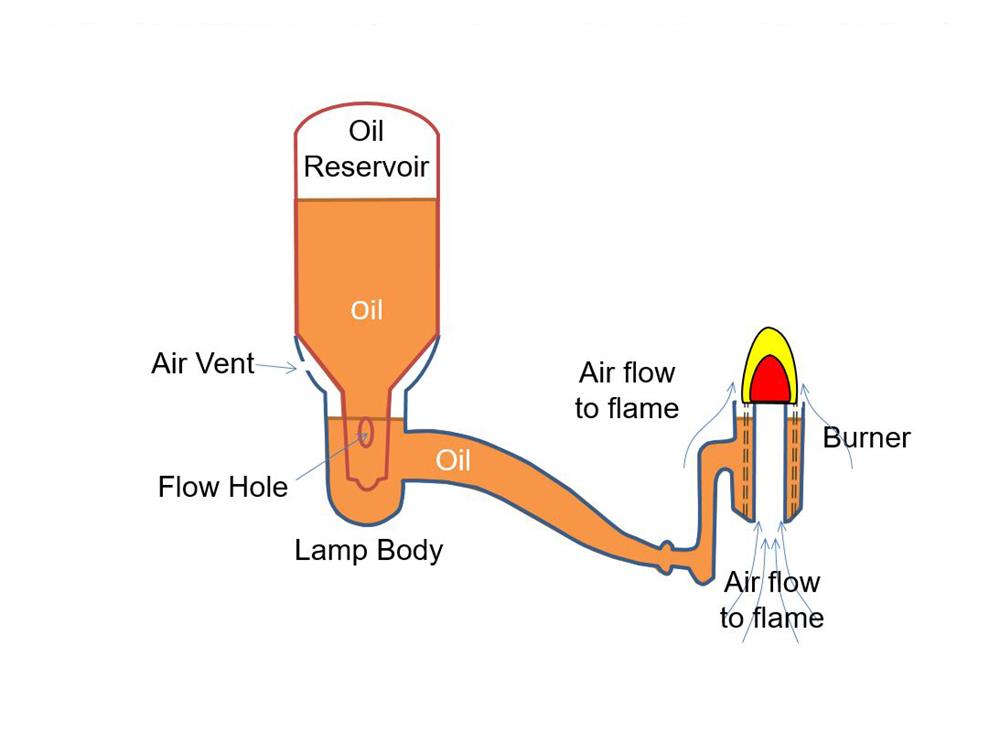
Adding a glass chimney sheltered the flame from any stray draughts, and also improved the air-flow through the burner.
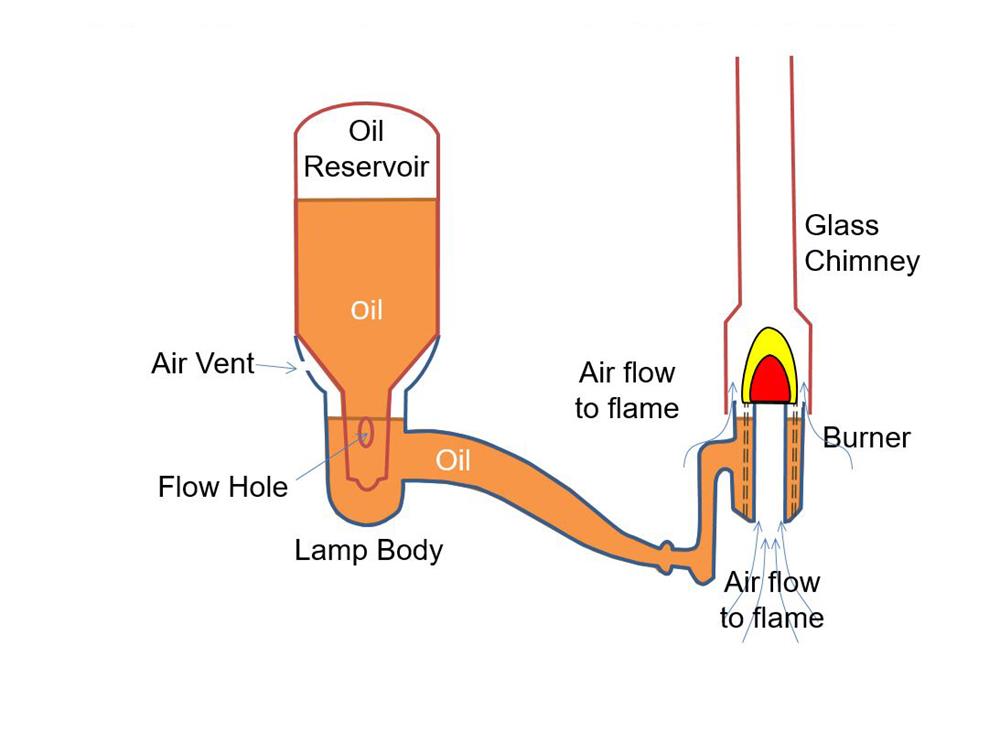
The Paraboloid Reflector
While we take focussing light reflectors very much for granted – they are present in car head-lights, hand lamps, torches and recessed ceiling lights etc. – they were only invented at about the same time as the Argand lamp.
The earliest record is from 1768, of lights at the mouth of the Mersey. Two large lamps had wooden paraboloid frames lined with small glass mirrors – much like Smith’s reflectors from the 1780s. Two smaller lamps had reflectors made of polished tin-plate. The inventor of these earliest reflectors is unknown.
The reflector focuses the light from the burner into a narrow beam, increasing its its intensity
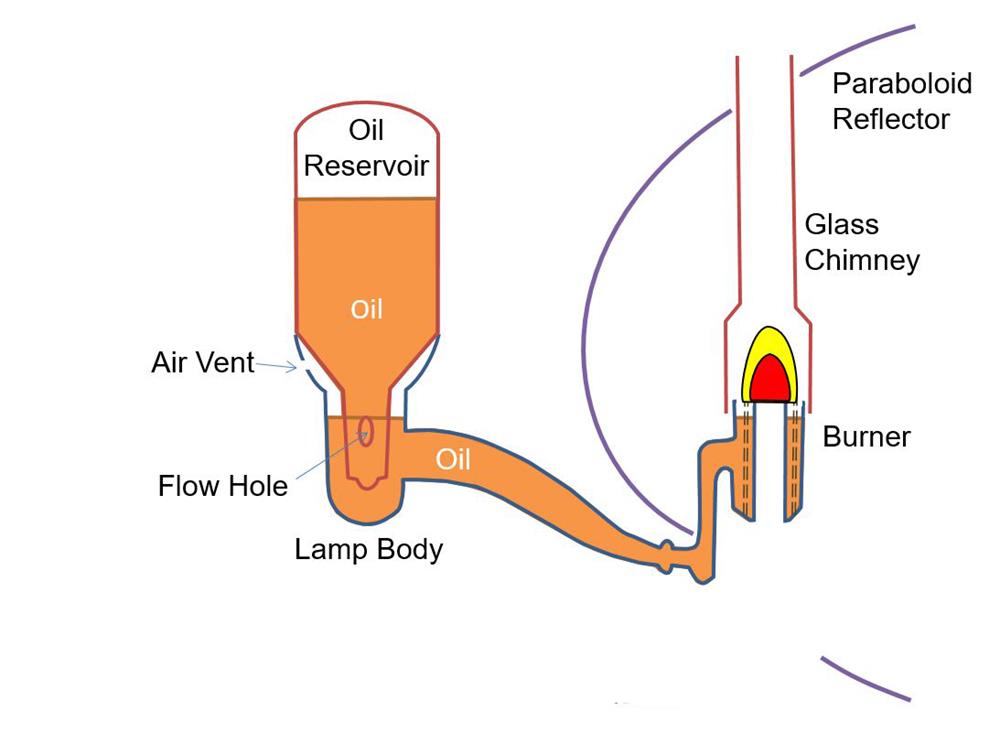
The sliding support mechanism
A clever sliding mechanism allows the burner to be held accurately in position when lit, or lowered beneath the reflector for maintenance.
Here is the burner in the raised position, with the flame positioned on the centre-line of the reflector, to create a parallel beam of light.
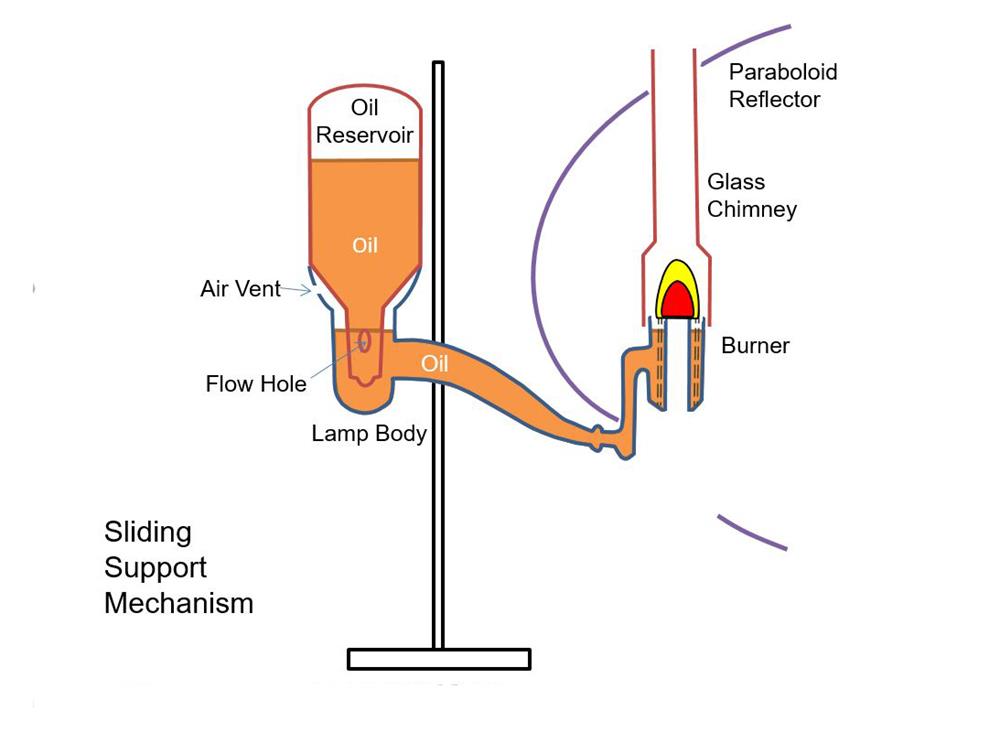
And here is the burner lowered for maintenance – e.g. to trim or replace the wick in the burner.
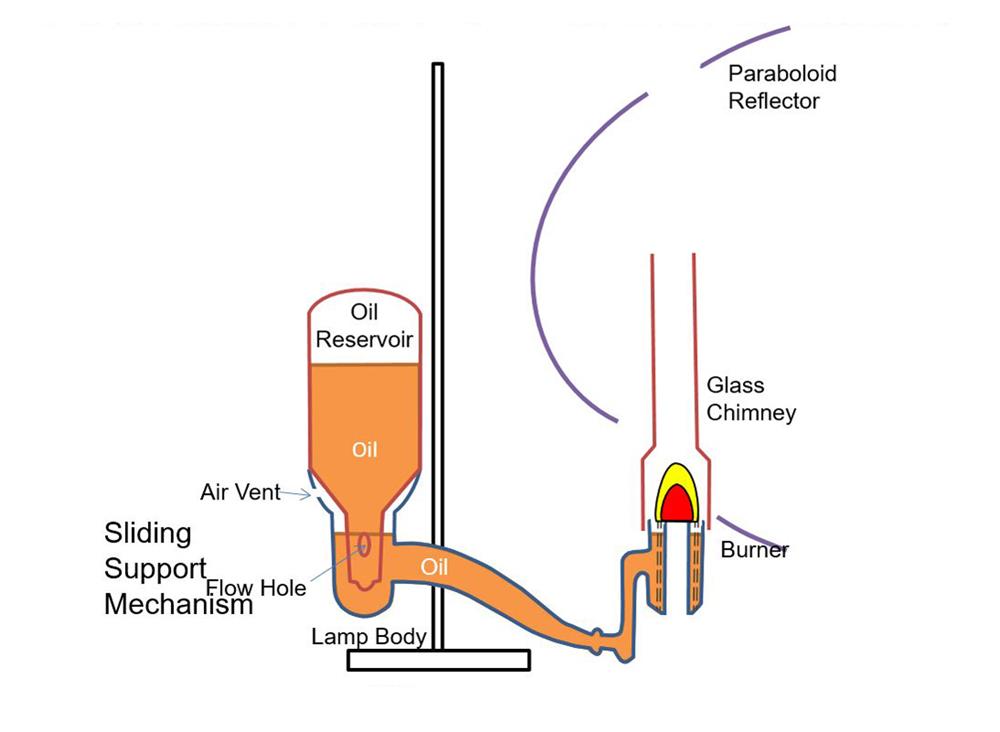
This mechanism was designed by Robert Stevenson, and was incorporated in all Northern Lighthouse Board lights.
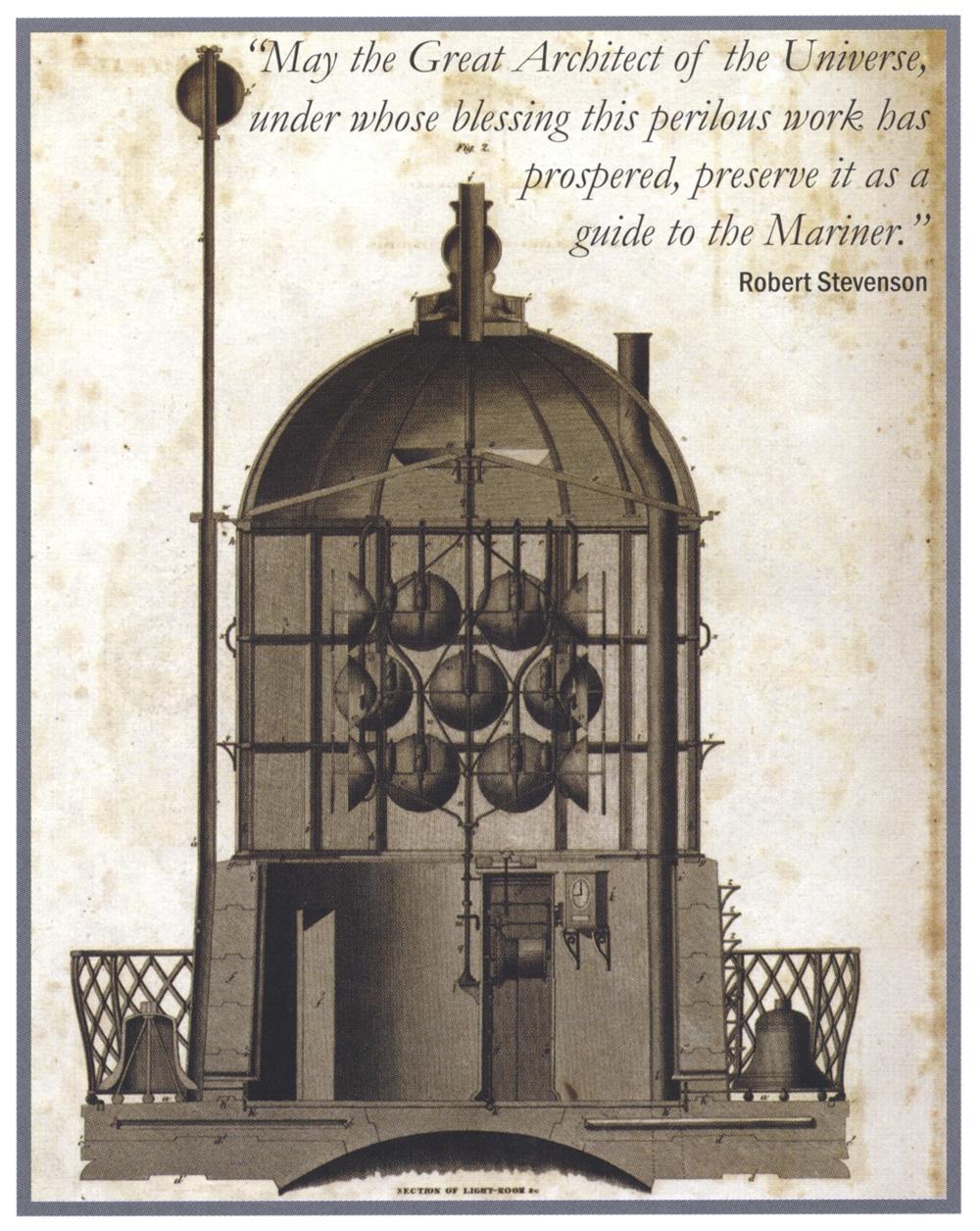
This cluster of 24 lamps was fitted to the Bell Rock lighthouse. It originally ran on whale oil.
It was later taken to Canada and fitted in the Cape Bona vista lighthouse where it ran on seal oil.
Cape Bona Vista image gallery
Cape Bona Vista Story
Today the Cape Bona Vista lighthouse has this fine array of six Argand lamps . . .

. . . the array is rotated to generate a sequence of flashes by this clockwork mechanism
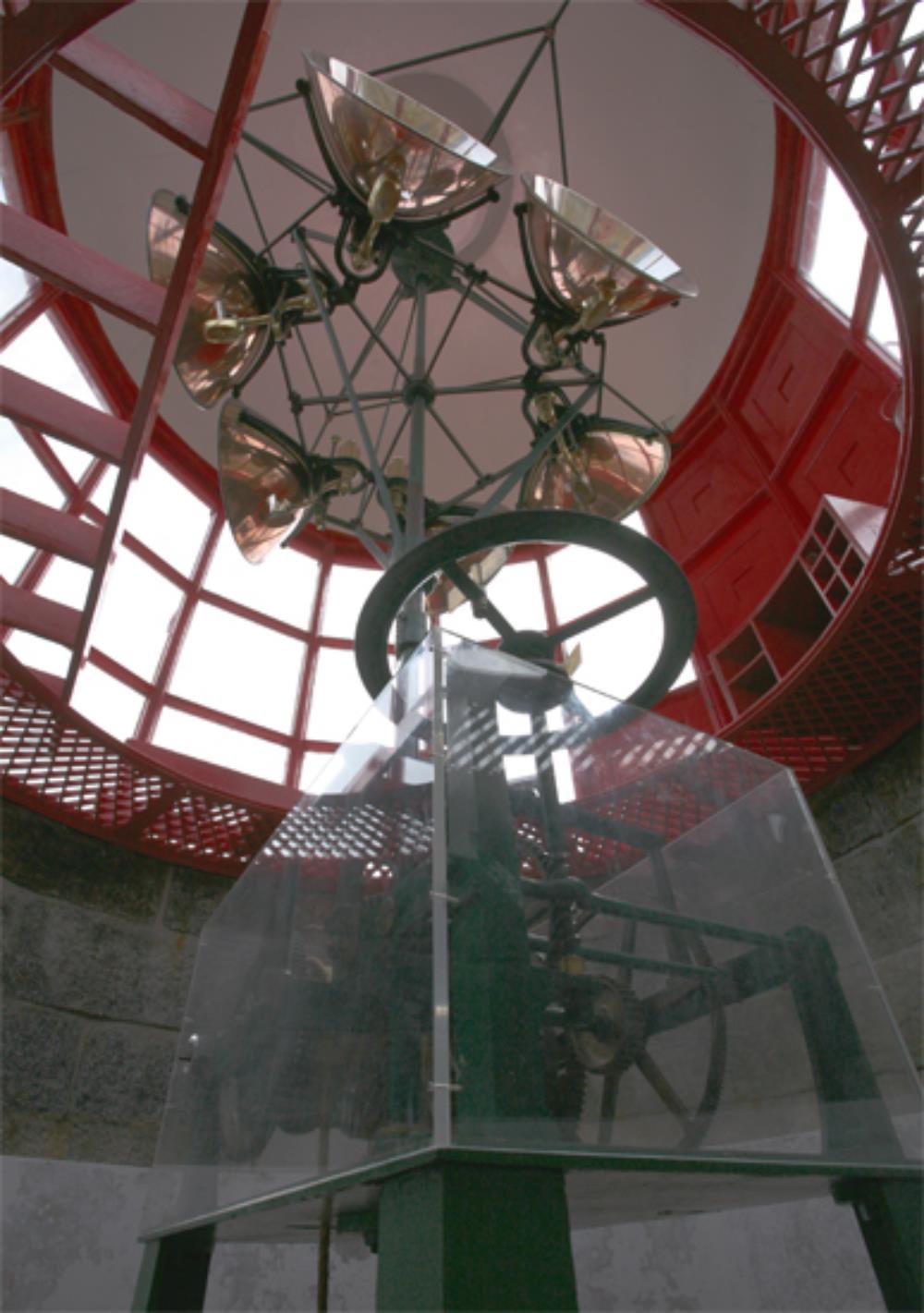
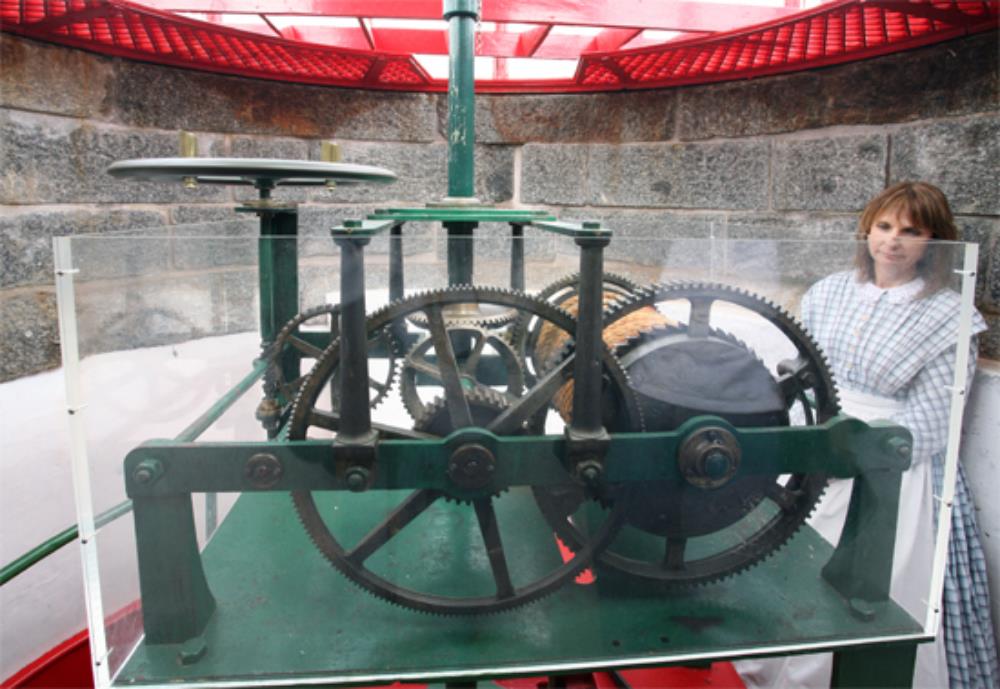
Before discussing oil, we should have a little diversion to explore the history of “The Lighthouse Stevensons”
| < The Argand Lamp – New Technology | Δ Index | The Stevensons > |